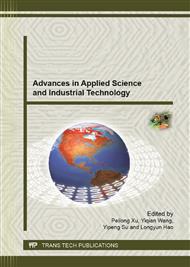p.825
p.829
p.833
p.837
p.842
p.846
p.851
p.856
p.861
Stock Index Prediction and Analysis Based on GASA-SVM
Abstract:
In order to improve the prediction accuracy of stock index, eliminate of the blindness of parameters selection for support vector machine, a stock index prediction method combined the genetic simulated annealing algorithm (GASA) which integrated the parallel search of genetic algorithm with the probabilistic sudden jumping characteristics of simulated annealing algorithm, with support vector machine (SVM) is proposed. Using daily data of Shanghai stock index opening quotation which is normalization processed, the stock index prediction model based on GASA-SVM is established. Optimal parameter error penalty parameter c=1 and Gaussian kernel parameter g=1.625 are obtained. Compared the result with GA-SVM prediction model, the comparative analysis shows that GASA-SVM(MSE= 0.000191111) model prediction capabilities are superior to GA-SVM(MSE=0.000018825) prediction model. It can provide valuable references for the investors.
Info:
Periodical:
Pages:
842-845
Citation:
Online since:
September 2013
Authors:
Keywords:
Price:
Сopyright:
© 2013 Trans Tech Publications Ltd. All Rights Reserved
Share:
Citation:


